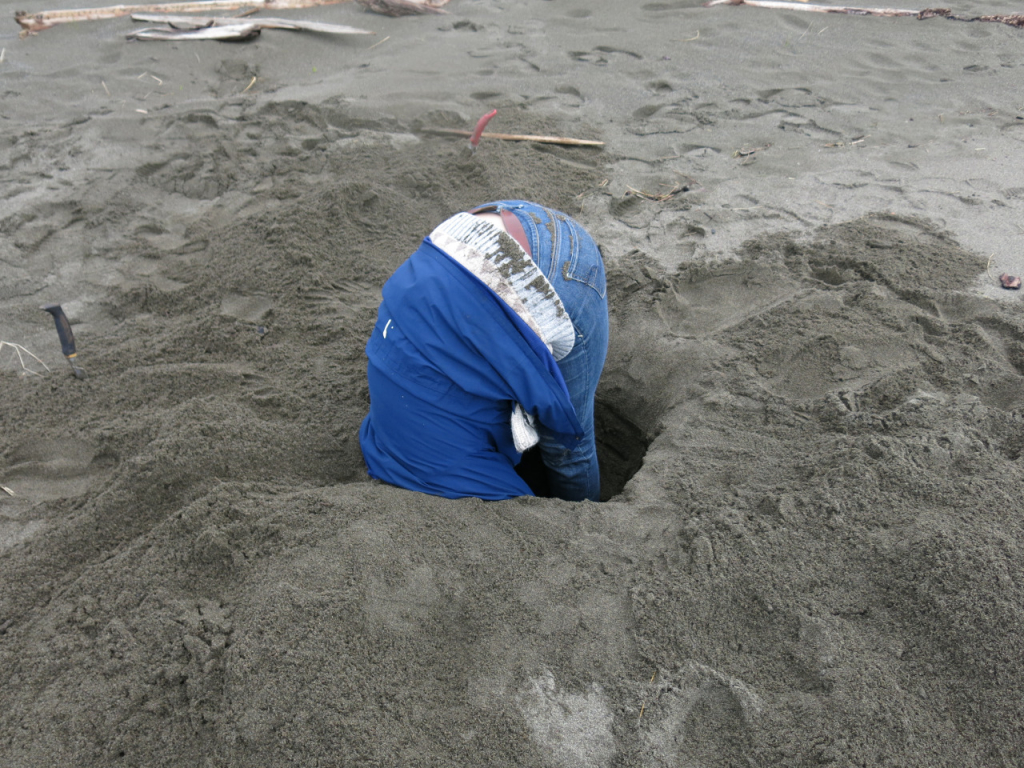
"Going inside - Score #15" Unlearning walks. Catherine Grau and Zoe Kreye, 2014
After the question: “Which are our Silent Universities?” the Bachelor students of the course Artistic Practice 1 have developed four fanzines that put forward their wishes and needs for learning architecture in a better way. To frame the starting question, a research journey on different pedagogic and spatial approaches for the past 100 years was undertaken. Visiting legendary examples as the Black Mountain College in North Carolina from 1933-1957, the Anti-University in London 1968 and the Architecture School of Valparaíso (founded in 1950 in Chile, still operating in its particular and highly poetic methodology), the journey continued towards various contemporary schools and projects that push the grounds of education and learning far beyond the traditional, frontal and hierarchical structures of knowledge transmission. More recent examples, as the School of Engaged Arts in St. Petersburg, Swaraj University in Udaipur, Universidad de la Tierra in Oaxaca, Free Home University in Lecce and the School of Walls and Space in Copenhagen, among others, instigated the students to re-imagine their education in other terms: their own terms. To encourage this act of re-imagination and of reclaiming their own learning processes, a few “unlearning exercises” were undertaken, including looking for often overseen valuable resources that surround us all the time - e.g. inner and outer landscapes, streets, trees, rivers, borders, and grandmothers…
Out of this, new ideas came up, old wishes were given voice and shape, all was presented and discussed warm-heartedly in the groups. We tried to find common grounds and peculiarities. For the common grounds, a general need for hands-on, active learning, including real life challenges with real building assignments was almost unanimous. Equally, traveling and getting to know different peoples and cultures, experiencing in loco building typologies and climatic needs was highlighted as an essential component for the process of becoming an architect. Many claim that the world is the classroom (see B.O.O.O, pp.5-9, 1:1. pp. 14-17) and these valuable immersive experiences should be added to the curriculum and officially acknowledged by the “ECTS” system, which by the way, should become a “WCTS”, or the World Credit Transfer and Accumulation System. (see 1:1) The “Art to Build College” was conceived into this framework, with a strong critique on the lack of social engagement of the current topics and programs of most European Architecture Faculties, TUGraz included. Countering the programmatic approach that serves 20-30% of the world population, this College focus on housing needs in the global south, as well on war zones and catastrophe relief challenges, within an integrated system of learning, exchanging, planning, financing and building. (see Student’s paradise)
Another common ground was the need for time, concentration and free choices. A general dissatisfaction with the rather closed and production oriented curriculum (aiming at 30ECTS per semester) was expressed in school and curriculum designs such as an “open curriculum” and “retreat school in Tibet” and (see Learning from the Bauhaus and School of Pandas, in Student’s paradise), that aim in an immersive and flexible learning structures and environments. Also, a more horizontal and live exchange between students and professors is mostly wished. Particular ideas, such as “architects-in-residency” came out an efficient in loco preparation for a more sensitive design process, where architecture students do a week internship in a real building with the typology they have to develop before they start the planing (e.g. a hospital, an airport, a prison, a museum..), getting to know the real needs of that typology not as an inanimate matter, but rather as a lived/living space. (see 1:1, pp.26-28).
All in all, the fanzines names already say a lot: Students' paradise, The New Architecture School, 1:1, B.O.O.O. Build On Our Own. They aim in opening up a (hopefully) fruitful debate on Architecture Education, eventually tackling changes in students and teachers worldviews, and more ambitiously, in our faculty curriculum...!
Next semester, in Artistic Practice 2 and in Workshop 1, this debate will continue and a few ideas presented in the fanzines will be tested out: in the class - out of the classroom.
FANZINES IN PDF >
SCHEDULE
06.03 - IZK YEAR INTRODUCTION
13:00 - 15:00 all groups IZK Halle
13.03 - first input and questions, distribution of research topics
20.03 - research / tutorials
27.03 - research / tutorials
03.04 - research / tutorials
10.04 - easter holidays
17.04 - easter holidays
24.04 - presentation of research
01.05 - holiday
08.05 - introduction to fanzine and publishing skills/ excursion to Vienna > Night School
15.05 - excursion to Vienna > Academy of Unlearning
22.05 - development of concept / tutorials
29.05 - workshop week
05.06 - holiday
12.06 - editing and publishing studio
19.06 - editing and publishing studio
26.06 - EVALUATION
FOR LEARNING MATERIALS AND RESEARCH TOPICS >> go here